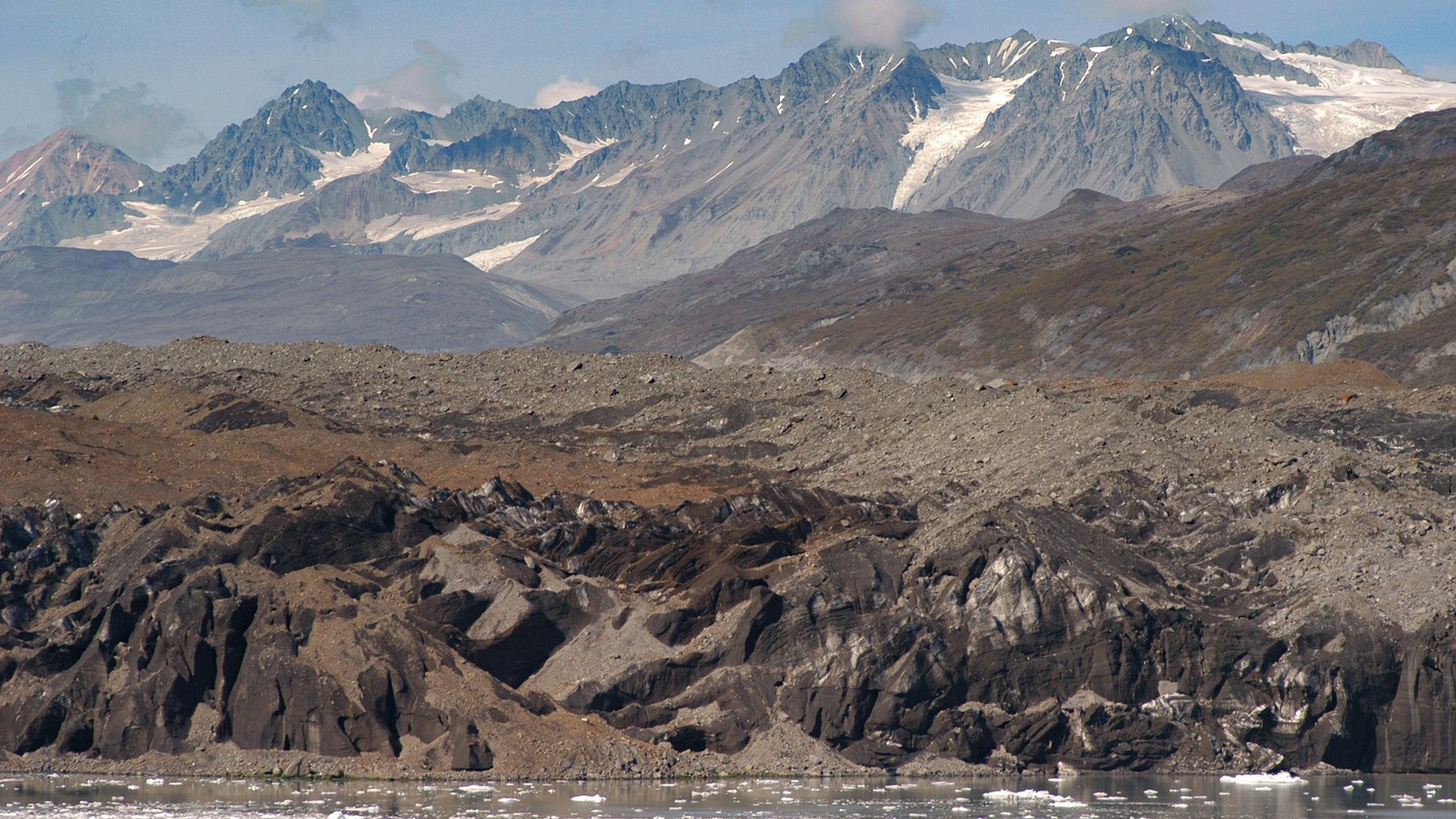Last updated: April 1, 2021
Place
Tarr Inlet

NPS Photo
Home of Grand Glaciers
Tarr Inlet marks the furthest point of venture into the West arm. At the head of Tarr Inlet, visitors come face to face with the Grand Pacific and Margerie glaciers. The Grand Pacific is the main glacier credited with rapidly advancing all the way to Icy Strait hundreds of years ago, effectively carving out the bay. Other glaciers fed into this one main glacier, which was named by John Muir. Now greatly receded, the Grand Pacific is a shadow of its former self. It is largely covered with debris that comes from the Ferris Glacier which feeds in from the west. The active face of Margerie Glacier offers a stark contrast. Ships often linger at the head of this inlet to observe the Margerie and to possibly see it calve. Look for harbor seals poking their heads curiously out of the water or hauled out on ice floes. Kittiwakes, herring gulls and glaucous-winged gulls are common. Sharp eyes might see puffins in the water. According to the U.S. Geological Survey, the inlet was named for Ralph Stockman Tarr, professor of physical geography at Cornell University, who visited this fjord in 1911. He taught geology and geography at Harvard and Cornell universities, and authored many geological publications including several about Alaska.
